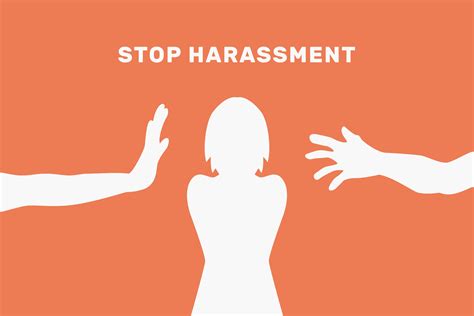
- What Is Workplace Sexual Harassment?
- How to Prevent Workplace Sexual Harassment
- Creating a Clear and Concise Sexual Harassment Policy
- Providing Training for Employees on What Constitutes Sexual Harassment
- Establishing a Grievance Procedure for Employees to Report Incidents of Sexual Harassment
- Taking Prompt and Appropriate Action to Address Complaints of Sexual Harassment
- Creating a Culture of Respect and Inclusion
- Workplace Sexual Harassment: A Guide for Employees
- Reporting the Incident
- Filing a Complaint with the EEOC
- Taking Legal Action
- Preventing Workplace Sexual Harassment
- Conclusion
What Is Workplace Sexual Harassment?
When you hear the term "workplace sexual harassment," what comes to mind? For many people, it conjures up images of overt and explicit acts of sexual misconduct. However, workplace sexual harassment encompasses a much broader range of behaviors that create an uncomfortable and hostile work environment for employees. It can include unwelcome sexual advances, requests for sexual favors, or other verbal or physical conduct of a sexual nature.
In the United States, workplace sexual harassment is a form of sex discrimination that violates Title VII of the Civil Rights Act of 1964. Under the law, employers are responsible for preventing and responding to sexual harassment in the workplace. They must create a work environment that is free from sexual harassment and take prompt and appropriate action to address any complaints of sexual harassment.
How to Prevent Workplace Sexual Harassment
There are several things that employers can do to prevent workplace sexual harassment, including:
Creating a Clear and Concise Sexual Harassment Policy
The best way to prevent workplace sexual harassment is to create a clear and concise sexual harassment policy. This policy should define sexual harassment, provide examples of prohibited behaviors, and outline the procedures for reporting and investigating complaints of sexual harassment. The policy should be distributed to all employees and should be reviewed and updated regularly.
Providing Training for Employees on What Constitutes Sexual Harassment
In addition to creating a sexual harassment policy, employers should provide training for employees on what constitutes sexual harassment. This training should help employees to understand what behaviors are prohibited and how to report incidents of sexual harassment. Training should be provided to all employees, regardless of their position or level of authority.
Establishing a Grievance Procedure for Employees to Report Incidents of Sexual Harassment
A grievance procedure is an essential tool for employees who have experienced sexual harassment. The procedure should provide a clear and confidential way for employees to report incidents of sexual harassment and to seek resolution. The grievance procedure should be fair and impartial, and it should be designed to protect the rights of both the employee and the employer.
Taking Prompt and Appropriate Action to Address Complaints of Sexual Harassment
When an employee reports an incident of sexual harassment, the employer should take prompt and appropriate action to address the complaint. The employer should investigate the complaint thoroughly and take appropriate disciplinary action against any employees who are found to have violated the sexual harassment policy. The employer should also take steps to prevent further incidents of sexual harassment from occurring.
Creating a Culture of Respect and Inclusion
In addition to the specific steps outlined above, employers can also create a culture of respect and inclusion in the workplace. This can help to prevent sexual harassment by creating an environment in which all employees feel valued and respected. Employers can create a culture of respect and inclusion by:
- Encouraging open communication and feedback
- Promoting diversity and inclusion
- Providing training on unconscious bias
- Creating a work environment that is free from discrimination and harassment
By taking these steps, employers can help to prevent workplace sexual harassment and create a more positive and productive work environment for all employees.
Workplace Sexual Harassment: A Guide for Employees
Workplace sexual harassment is a serious issue that can create a hostile work environment and make it difficult for employees to perform their jobs effectively. It’s important to know what constitutes sexual harassment and what you can do if you experience it.
Sexual harassment can take many forms, including unwelcome sexual advances, requests for sexual favors, and other verbal or physical conduct of a sexual nature. It can be perpetrated by anyone, regardless of their position or authority, and it can occur in any workplace setting.
How to Respond to Workplace Sexual Harassment
If you are the victim of workplace sexual harassment, there are several things you can do, including reporting the incident to your supervisor or human resources department, filing a complaint with the Equal Employment Opportunity Commission (EEOC), or taking legal action.
Reporting the Incident
If you have been harassed, it’s important to report the incident as soon as possible. You can do this by speaking to your supervisor, human resources department, or another trusted employee. When reporting the incident, be as specific as possible about what happened, including the date, time, and location of the incident. Also, be sure to provide the names of any witnesses who may have seen the harassment.
Filing a Complaint with the EEOC
If you are unable to resolve the issue with your employer, you can file a complaint with the EEOC. The EEOC is a federal agency that enforces the laws against workplace discrimination, including sexual harassment. You can file a complaint online or by mail, and the EEOC will investigate your complaint and attempt to reach a resolution.
Taking Legal Action
If you are unable to resolve the issue with your employer or the EEOC, you can take legal action. You can file a lawsuit against your employer for sexual harassment, and you may be entitled to damages, including back pay, lost wages, and emotional distress. However, it’s important to note that filing a lawsuit can be a long and expensive process, so it’s important to weigh the pros and cons carefully before making a decision.
Preventing Workplace Sexual Harassment
There are a number of things that employers can do to prevent workplace sexual harassment, including creating a clear and concise sexual harassment policy, providing training to employees on what constitutes sexual harassment, and establishing a grievance procedure for employees to report incidents of harassment. Employers should also create a work environment that is free from sexual harassment and take steps to address any incidents of harassment that do occur.
Conclusion
Workplace sexual harassment is a serious issue that can have a devastating impact on employees. If you have been harassed, it’s important to know that you are not alone and that there are a number of things you can do to address the situation. By reporting the incident, filing a complaint with the EEOC, or taking legal action, you can help to stop workplace sexual harassment and create a more positive work environment for everyone.


